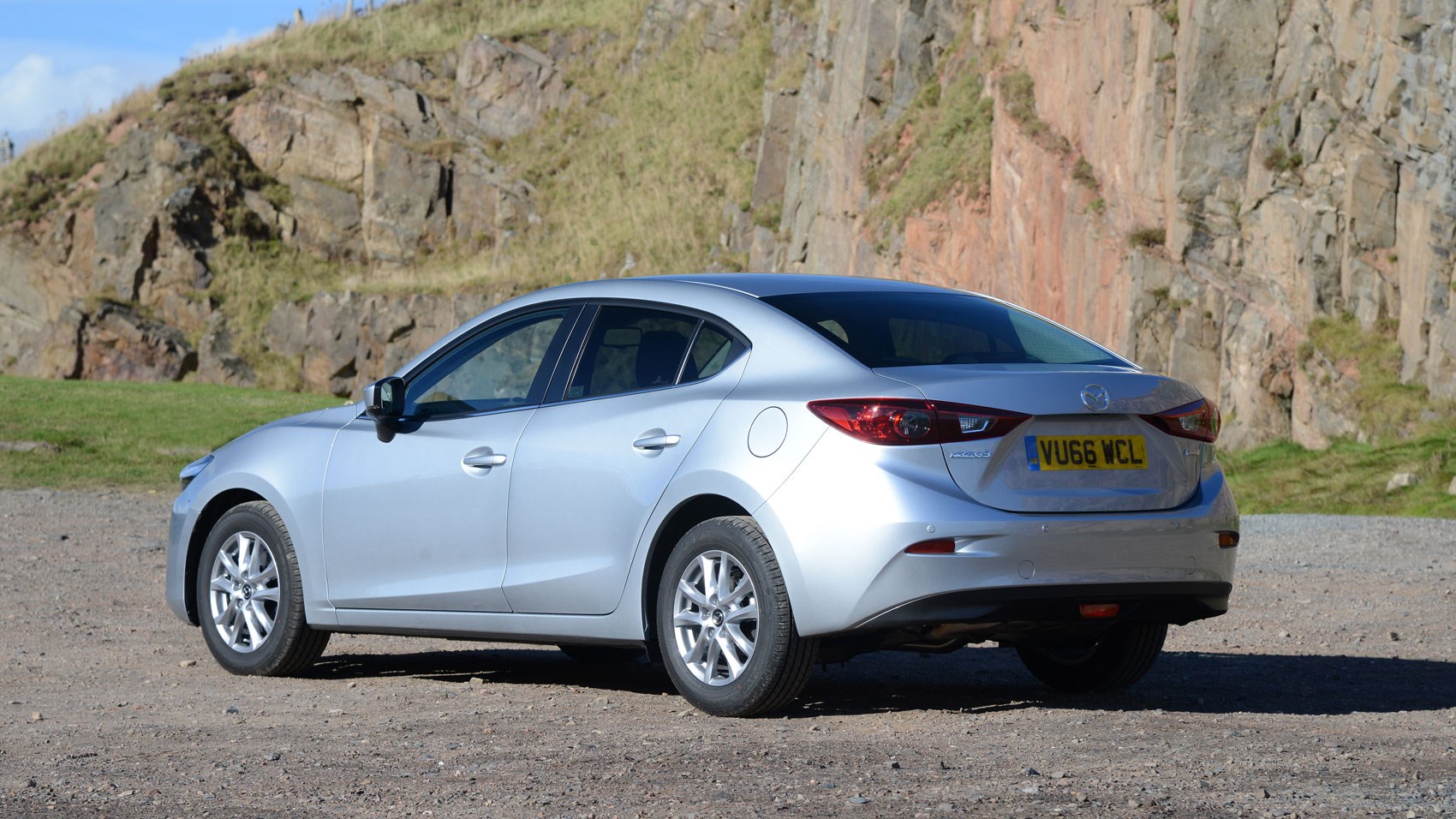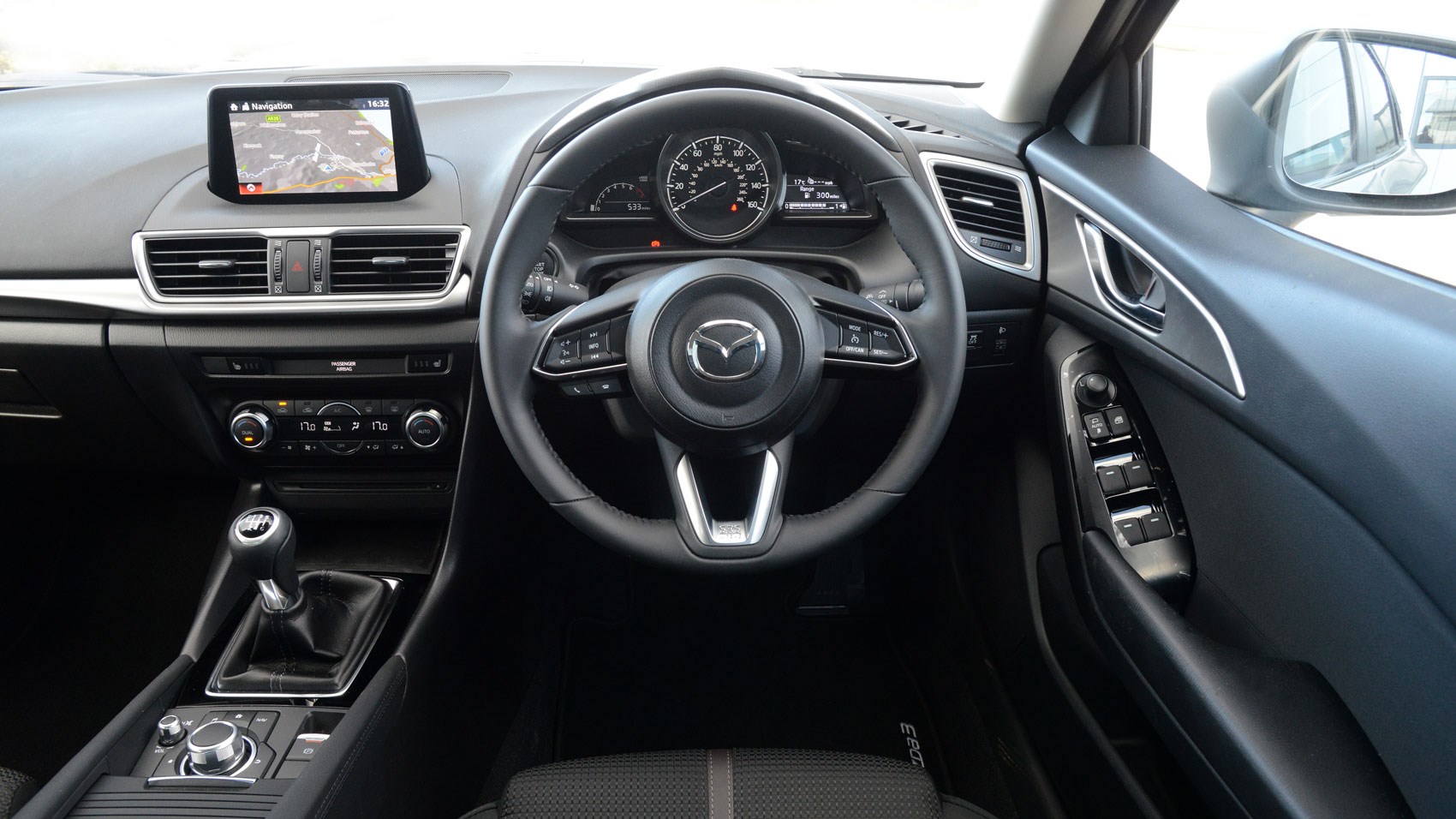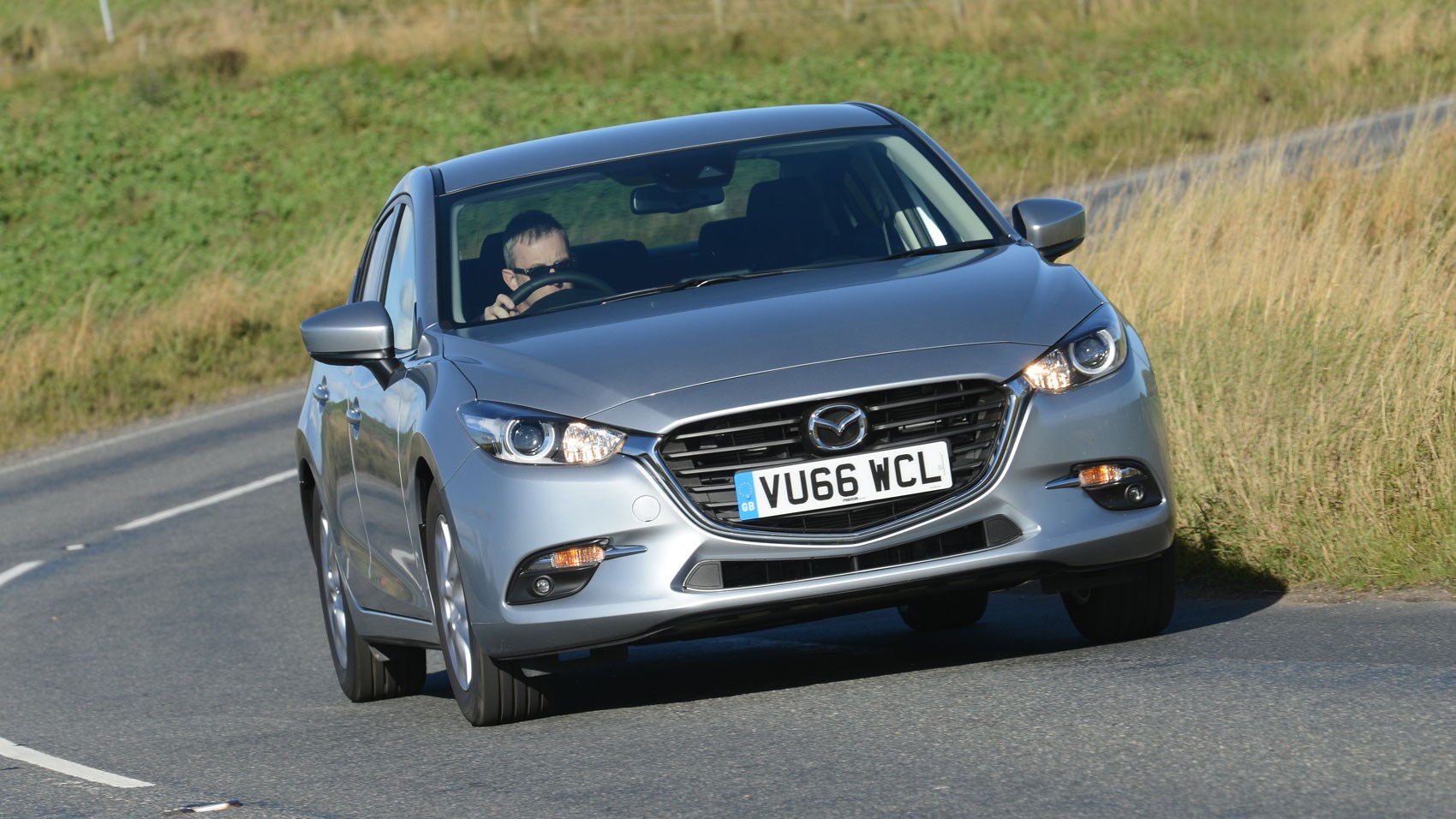► Mazda 3 Fastback driven
► Worth one over the hatch?
► Well specced and good to drive
Visiting from the land that time forgot, a naturally aspirated petrol-engined compact saloon. Not such an oddity in some other parts of the world, but this flies in the face of all current trends in the UK.
But just because the Mazda 3 Fastback Skyactiv-G has no turbochargers, no rear hatch and no pretence of being a 4×4 does that mean it’s inferior to more modish alternatives?
What are your engine and spec choices?
In its current line-up Mazda offers the Fastback with two engines, two spec levels and one transmission.
The one we’ve tested here is the 118bhp 2.0-litre petrol four, which like the diesel has a six-speed manual gearbox and front-wheel drive.
The 148bhp diesel is even more economical than the frugal petrol, quicker and faster; also more expensive.
There are just two trim levels: SE-L Nav and Sport Nav. They differ only in wheel size and a few small details. You need look to the hatchback to find a slightly bigger choice: you can have a six-speed automatic with either of these engines, and there’s a less powerful diesel engine (with manual gearbox only).

All versions come well equipped with safety and convenience features, including engine stop-start, emergency braking, dual-zone climate control, heated front seats and cruise control.
It’s a really nicely put-together car – nothing flashy or upmarket about it, but it’s intelligently designed, well made and configured for the real world, a world of a traffic jams and cracked tarmac, not a fantasy racetrack.
The infotainment set-up is a typical example of what’s good about the 3. There’s a touchscreen, but most of the changes you want to make frequently – radio station, temperature etc – are made using the rotary controller and shortcut buttons. It’s precise in operation, easy to understand and gives very little cause to take your eyes off the road.

Even simpler is the trip-reset: a stalk sticking out of the instrument panel, a system used for decades and never bettered. If that leads you to expect a traditional handbrake you’ll be disappointed, although the upside is a decent cubbyhole in the central armrest, complete with two USB ports and an SD slot. Pleasingly, there’s a CD slot with the DAB radio.
The back seats are fine for two full-size adults or three smaller individuals, helped by the less sloped roofline of the Fastback compared to the hatch.
The boot is bigger than the hatch’s with the rear seats up – 419 litres vs 364 litres – although the hatch opening makes it easier to drop your bags and boxes into the boot, whereas the bootlid will sometimes require you to crouch down. And there’s no wiper on the Fastback’s rear screen.
What’s it like to drive?
It corners very well, following a accurately, gripping tenaciously. It’s fitted with something called G-Vectoring Control, which uses steering inputs to tweak how much torque is sent to each of the front wheels. On paper that sounds like the lamest, most watered-down version of torque vectoring imaginable, but it works.

The six-speed manual gearchange isn’t the most precise or rewarding
The brakes are fine – no drama, nothing to shake your confidence. And the suspension just gets on with its job. The only limitations are imposed by the low power output; it’s just not intended for driving hard and fast.
Fastback or hatchback?
There’s very little in it. A fraction more rear head room and boot space in the saloon. Same economy. The Fastback is fractionally faster (it had to be, really, didn’t it?). And the hatch has a rear wiper.
But visually the Fastback has something that the hatchback lacks: a strong identity. This is to an extent muffled by the bland colours (apart from the brand’s trademark Soul Red) Mazda thinks Fastback customers want, but the lines are extremely elegant – like a tauter, better proportioned Mazda 6, or a Honda Civic that’s had all the zany nonsense taken out. The hatch, by contrast, is the height of anonymity.
If the comparison is with other compact four-door saloons, the current choice is quite modest. Audi A3. And… no, that’s it. And the A3 is a bit more expensive.
Verdict
There’s a reason why the compact saloon has all but disappeared from the UK market: leaving aside any arguable stylistic advantages, hatchbacks tend to be just that little bit more versatile and practical for young families and indeed anybody else who wants to carry interesting combinations of oddly shaped luggage.
But if you like the looks and don’t need the fifth door, then there’s something about the Fastback that just works: the different elements combine harmoniously, and although the engine’s nothing special it has a chassis that’s good enough to let you enjoy it to the full.
Check out our Mazda reviews